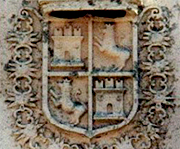
Industry Exhibit Introduction
In 1763, the Treaty of Paris brought the Seven Years War to an end. As part of the peace negotiations, Spain's territory of La Florida was ceded to Britain. After almost two centuries of Spanish rule, all of Spain's troops, military supplies, and citizens living in Florida were transported to Havana, Cuba, and the colony was re-populated by British troops from the Royal Army headquarters in New York. Four sloops were sent from New York to St. Augustine, the oldest continuously occupied European settlement in the present-day U.S., loaded with much-needed supplies for Florida's new inhabitants. One of these ships, the Industry, captained by Daniel Lawrence, never reached her destination. Falling victim to the notorious shifting sands off St. Augustine's harbor, she struck a sandbar and was lost on May 6, 1764. She had been loaded with artillery, ammunition, and tools that had been intended for the newly established British garrisons in Florida. This loss was a blow for Britain's control of Florida, which would only last another two decades (1763-1784).
The shipwreck was discovered in 1997 by archaeologists from Southern Oceans Archaeological Research, Inc. (SOAR), after conducting extensive archival research and a magnetometer survey. Excavations were conducted between 1998 and 2000 first by SOAR and subsequently by the Lighthouse Archaeological Maritime Program (LAMP), the research arm of the St. Augustine Lighthouse and Museum. A variety of artifacts reflecting the Industry's cargo of munitions and tools were uncovered and recorded, including eight cast-iron cannon, an iron swivel gun, crates of iron shot, three iron mooring anchors, several millstones, and boxes of tools such as axes, shovel blades, knives, trowels, files, and handsaws. Many of these finds, including one of the cannons, were recovered, conserved, and are currently on display at the St. Augustine Lighthouse and Museum.
LAMP archaeologists continue to monitor the Industry wreck and are planning on renewing investigations at the site in the near future. Past and future seasons of archaeological investigation of the Industry promise to continually improve our understanding of this brief but important period in the history of our nation's oldest port city.
Chuck Meide, Director, LAMP
Sam Turner, Director of Archaeology, LAMP
Lighthouse Archaeological Maritime Program
Next

